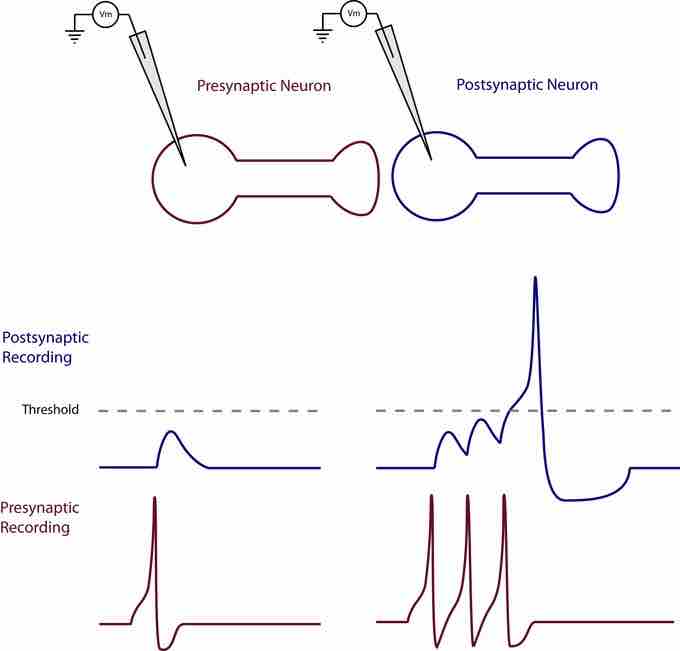Postsynaptic potentials are changes in the membrane potential of the postsynaptic terminal of a chemical synapse. Postsynaptic potentials are graded potentials and should not be confused with action potentials, although their function is to initiate or inhibit action potentials.
Many postsynaptic membrane receptors at chemical synapses are specialized to open ion channels. This converts a chemical signal into an electrical signal. Chemical synapses are either excitatory or inhibitory depending on how they affect the membrane potential of the postsynaptic neuron. The neurotransmitters bind to receptors on the postsynaptic terminal resulting in an opening of ion channels. At excitatory synapses, neurotransmitter binding depolarizes the postsynaptic membrane. Unlike the action potential in axonal membranes, chemically-gated ion channels open on postsynaptic membranes. Sodium and potassium diffuse simultaneously but in opposite directions.
Since the electrochemical gradient of sodium is steeper than that of potassium, a net depolarization occurs. If enough neurotransmitter binds, depolarization of the postsynaptic membrane can reach 0mV, which is higher than threshold of -30-50mV. This is an excitatory postsynaptic potential (EPSP) as it brings the neuron's potential closer to its firing threshold (about -50mV).
Neurotransmitter binding at inhibitory synapses reduces a postsynaptic neuron's ability to generate an action potential. Most inhibitory neurotransmitters hyperbolize the postsynaptic membrane by making it more permeable to potassium or chloride. When the opening of the ion channels results in a net gain of negative charge, the potential moves further from zero and is referred to as hyperpolarization. This is an inhibitory postsynaptic potential (IPSP).
EPSPs and IPSPs are transient changes in the membrane potential. A single EPSP at one synapse is generally far too small to trigger an action potential in the postsynaptic neuron. Postsynaptic potentials are subject to spatial and temporal summation.

Temporal summation
This figure depicts the mechanism of temporal summation in which multiple action potentials in the presynaptic cell cause a threshold depolarization in the postsynaptic cell.